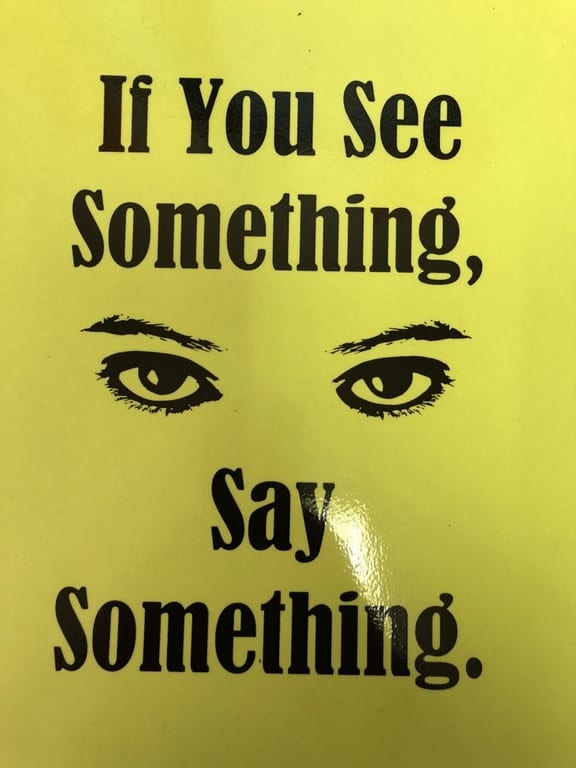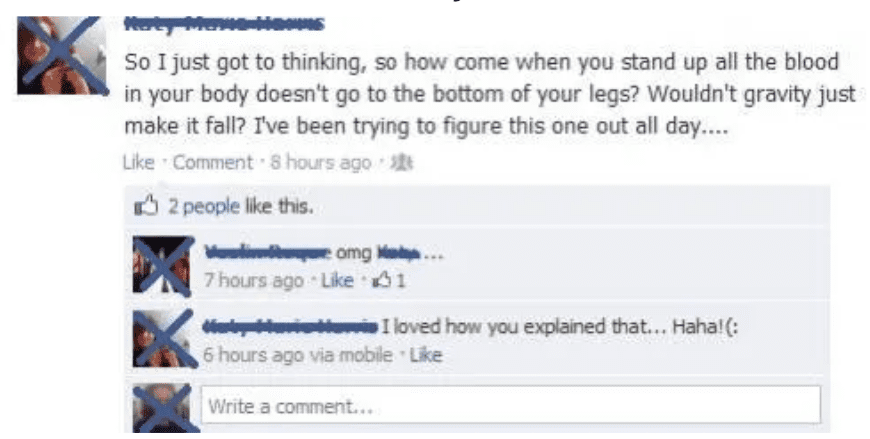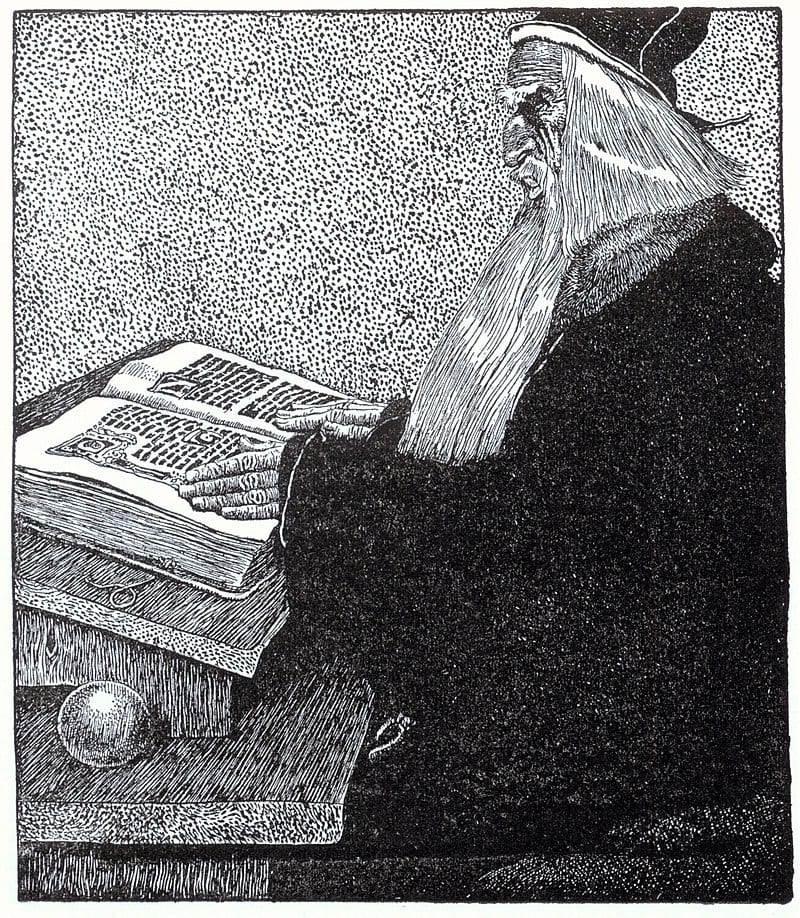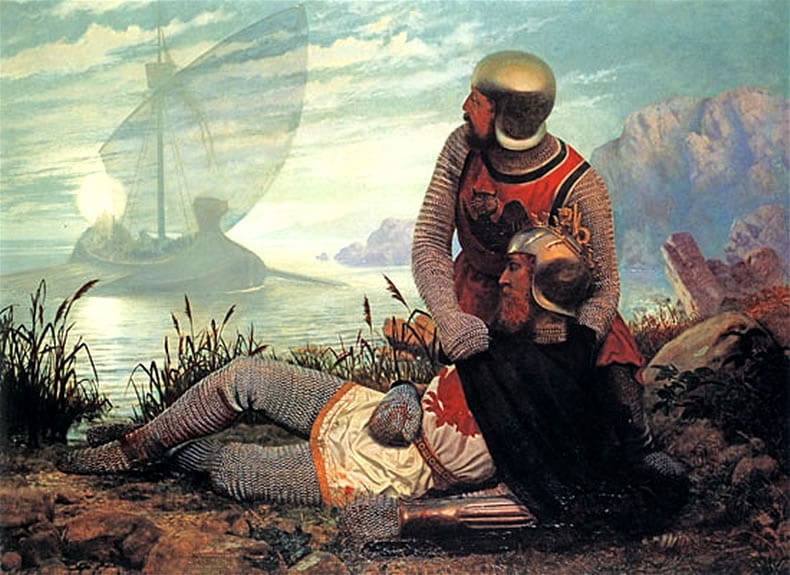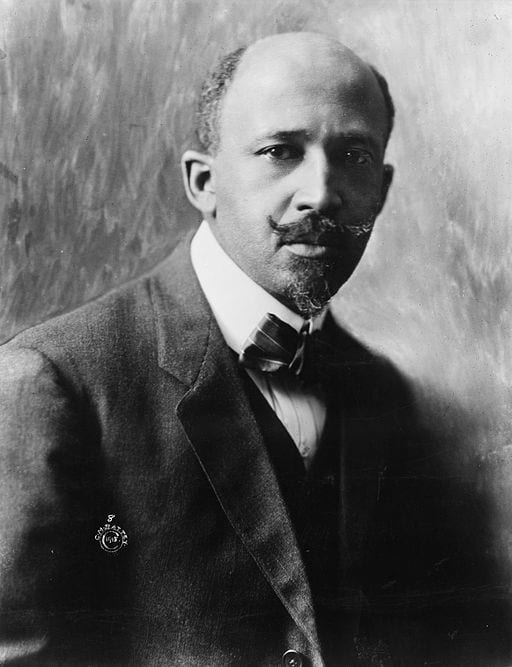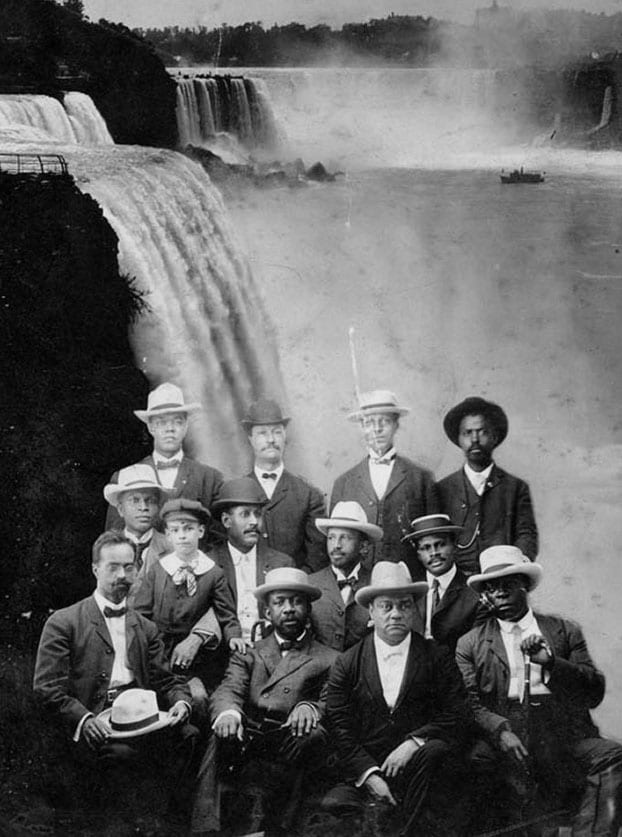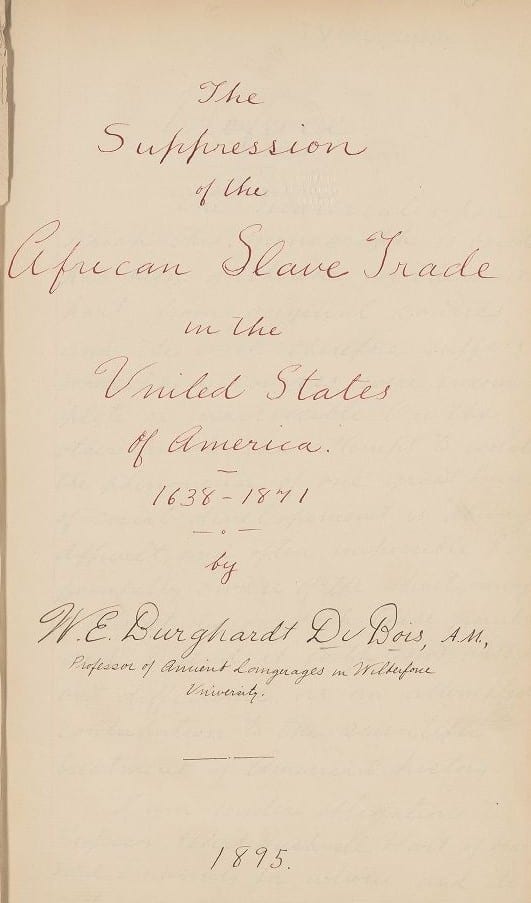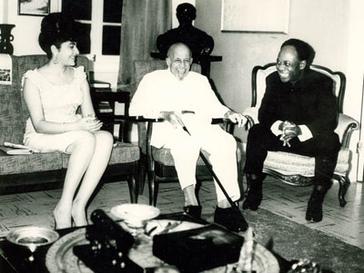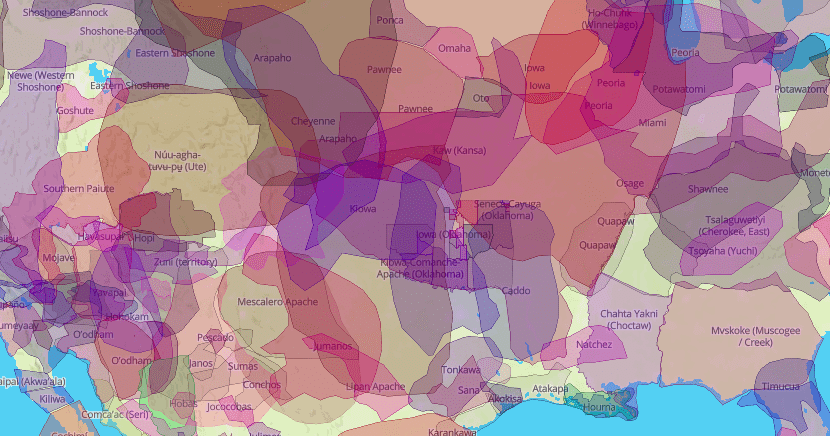Back when I was in college, I spent a few months working at a local museum, and let me tell you: if you think the stuff on display is cool, you’d be absolutely mind-boggled by the stuff that’s in storage/behind-the-scenes.
There are plenty of things that have been rotated out and might be put back out some day, but there’s also tons of stuff like rare artifacts and ancient documents that, sadly, will never see the light of day.
These AskReddit users share the coolest things they’ve seen in museums that guests don’t get to view.
1. Weapons
“I interned at the US navy museum for a few months, primarily in the armoury
There is a long list of awesome stuff, but the best was all the Vietnam era SEAL weapons. China lake grenade launcher (002), prototype .50 rifles, modified shotguns, suppressed m16e1’s…..
And that’s before the really spooky stuff like a g3 lacking all external markings and a soviet SVD donated by the state department in the late 60’s…”
2. Storage
“My mom was a helicopter pilot for a tour company and Jay Leno had a hanger next door to her company’s for storage. The security guard let me walk around and the amount of rad sh*t he has in his back up storage (not even his real shop or main storage) is insane.”
3. Great grandfather
“Obligatory don’t work at a museum but……. My great grandfather built a homemade motorized bicycle that was put in the Billy the Kid Museum in Fort Sumner NM. I went to see it a couple of years ago and when the curator found out I was related, he took me in the back and showed me a homemade sawmill my great grandfather had also built that they had taken off display because they didn’t have room for it.”
4. Cold storage
“Didn’t end up becoming a museum professional, but had a museum studies class in college that took some behind-the-scenes field trips with local curators. The wildest thing I saw as the cold storage room at the Cleveland Museum of Natural History. It’s where they keep all the taxidermy, and there are a TON of animals.
Imagine walking through a giant refrigerator full of animals that don’t go together at all “in real life”, cheetahs next to wolves, moose next to lions, gazelles with raccoons between their legs. Shelves full of squirrels and birds. So many birds–like going down a grocery store aisle, except it’s full of birds. You’re surrounded by animals, but everything is motionless and staring at you with glass eyes. It was completely surreal.”
5. A lot of guns
“One castle type museum I did my work experience in I was taken in a room just full of guns.
I am a lot older and work in a museum again now so I know how things are stored carefully, in controlled conditions, but these guns were just piled about. There were ton of musket looking guns but two that stood out was something that looked like a revolver but with a barrel like a canon, and a musket that was much bigger barrel and eleven of my feet long.
It was in the early nineties so I’m sure they’ve tidied up a bit now, but so so many guns.”
6. “Best job ever”
“Hmmmmm. Where to even start? Fun fact – most museums only have about 0.1-10% of their collections on display at any given time.
My desk used to be right next to an atomic bomb.
A couple of times, I was in Charles Lindbergh’s pants. Also Neil Armstrong’s boots. Also saw Buzz Aldrin’s underpants.
I got to hold a pair of Roald Amundsen’s skis.
SPACE SUIT STORAGE. It’s like a morgue but better. Fun story – one of the best ways to transport space suits is in coffin boxes. Always tripping over coffin boxes everywhere on shipping days.
A drum hand-collected by Margaret Mead that’s one of three like it left in the world (iirc).
Victorian hair art. So disturbing we didn’t have any on display at that museum. As one classmate said, “that’s not art, that’s the shower drain!”.
Airplanes made out of plywood.
An actual military medal that was a hand flipping the bird – Order of the Rigid Digit. Still my favorite use of taxpayer dollars to this day.
Napoleon’s handwritten notes for his autobiography. There was also a collection of prints with his face that made excellent memes among my friends.
James Doolittle’s pilot license signed by Orville Wright.
Lindbergh’s prize check for crossing the Atlantic.
135 laxatives previously belonging to Charles Lindbergh. Fun story – Jane Addams used the same kind of laxatives.
Used tissues. Used bandaids. Random trash. Unidentifiable fragments of wood. A board that was supposed to call cats to it or some weird hocus pocus like that. All things we had to take very seriously and treat with the same care we did everything else because some dumdum decided to accession everything.
A very wide range of baccula, aka penis bones.
Dinosaur storage, need I say more?
The super secret Egyptian temple buried in the bowels of the Field Museum.
Teddy Roosevelt’s samurai outfit, gifted to him at a state dinner by the Japanese ambassador. He then drunkenly put it on and ran around the White House in it, iirc.
A second atomic bomb.
Ugh, best job ever. I make myself jealous sometimes. Even when I had to alphabetize and chronologize 653 barf bags.”
7. Mummies
“My wife is an art curator. In her younger life, she was working at a museum and came across a box that said, “mummy head”.
Guess what was in there? A mummy head, as advertised.
My favorite experience from visiting her at work (besides meeting Cheech Marin… seriously, dude! He borrowed my guitar!) was blowing as much time as I wanted looking at a Warhol print from 1966. It was mind blowing to see all that effort to make something seem shallow and simple.
By the way, prints are awesome. You can buy art for less than the cost of furniture, directly from the artist. You are putting beer in one’s mug, gas in the van, alimony in the envelope.”
8. Super Important
“I went to a Super Important Museum (at least in my city? I don’t think I should name it) with my 11th grade anthropology class, and apparently my teacher had an in with someone there. We were brought to a conference room where there was an Incan mummy just sitting there on the table. This mummy had been specifically freed from the unknown depths of the museum to say hello to us.
It was a teenage girl sort of hunched over, and I remember she had braids. My teacher encouraged us all to touch the mummy. Like, barehanded. I seriously doubt every tour got to touch it. We were totally allowed. “You’re never going to get another chance to do this,” my teacher said.
I touched the mummy’s hand, I think, and the dress over her knee, vaguely horrified at the whole situation. Was trying to eat my fries a couple hours later and thought about the fact that I’d touched a dead body with those same fingers I was using to eat lunch and almost retched. I have not in fact ever gotten another chance to touch a mummy.”
9. Huey
“I volunteer at an air museum. We had just got a Huey helicopter to restore and it was in the maintenance hangar. Some Vietnam vets that flew a Huey found out that we got one in. We let them into the maintenance hangar to check it out and while they were looking at it they discovered it was the Huey that they flew in Vietnam. They had no idea that it had survived.
I was just hanging out and got to witness the whole thing.”
10. Creepy
“I volunteered in collections at a state history museum for a while. Two things especially have stuck with me.
A huge collection of dolls that are stored head down with their tiny little hands (and sometimes eyes) wrapped. It’s just as creepy as it sounds.
Also one time I got to vacuum a buffalo hide. That was fun.”
11. Hidden
“The prison cell door which housed Rudolph Hess when he died in 1987. It is preserved in a back room in a museum in the US. I was told by a staff member that it was not on display, and likely never would be, due to avoiding neo-Nazi attention.”
12. Zoo life
“A few things come to mind:
I spent several years working as a field biologist surveying headwater streams on private timber company land in the backcountry of Oregon. A lot of that land is only accessible through locked forestry gates, but it is many thousands of acres of gorgeous wild land that the public typically doesn’t get to see or access.
I used to work at the Oregon Zoo as well and have been allowed to go behind a lot of the animal exhibits to help clean or feed or whatever. That was tons of fun. The rhinos were my favorite – very friendly, and absolutely immovable objects when you touch them.
Now as a scientist I get to do some unique and fascinating work at times in some high-tech or high-profile labs, and also often work on research vessels at sea. Most of this is not directly open to the public.”
13. Words from a veteran museum worker
“I’ve worked at multiple museums and Archives/Special Collections sections of libraries (in various capacities). Some of the highlights:
The full collection first editions of Mildred Benson’s Nancy Drew hardbacks from the 1930s
the autographed Arthur Rackham-illustrated copy of Grimm’s Fairy Tales that we had sitting on our shelves in the Archives of my university, owned by his aunt-by-marriage and donated to us
The Virginia Museum of Transportation had so many cool railroad bits and bobs floating around in storage, especially while they were working on the restoration of the 611 steam engine.
a Lewis and Clark original map of the Pacific Northwest, kept in the Library of Congress archives because it’s too fragile to displayAnother one that I just remembered:
the beautiful illuminated manuscripts and Book of Days from the Middle Ages that my university had sitting around in Special Collections. We occasionally wheeled them out for the Medieval Lit undergrads, but other than that they were generally locked up.”
14. Experiments
“Worked in a science museum. It’s not exactly not public, but when the museum was closed or on slow days we used to test out ideas we found on the internet for science activities. Anything from liquid nitrogen hurricanes to green and purple fireballs – if we had the ingredients, we could try it.”
15. Middle of nowhere
“I used to work in a local historical society, and their exhibit space was very small. Someone donated some land and a large barn to the historical society. My co-worker and I went to go check it out, and there was a huge horse-drawn hearse inside and literally nothing else. It was super creepy. It would be cool to display somewhere in the right exhibit, but we didn’t have space or the audience. As far as I know, it’s still during there in that barn in the middle of nowhere.”
The post Museum Workers Reveal the Coolest Things That Aren’t on Public Display appeared first on UberFacts.



